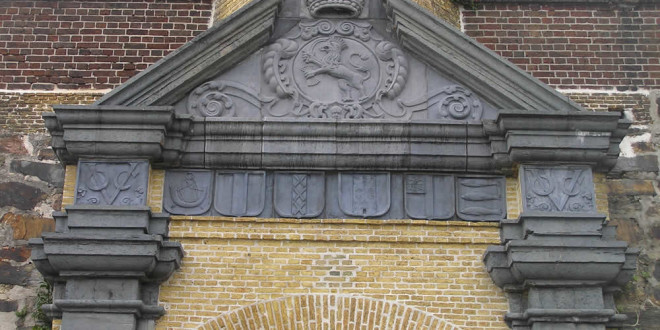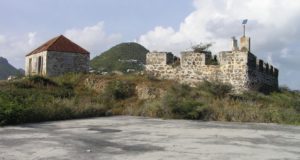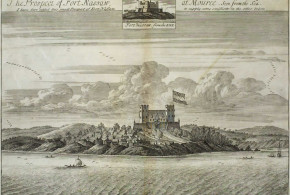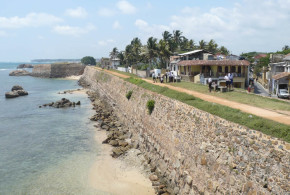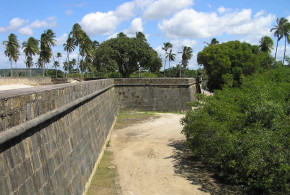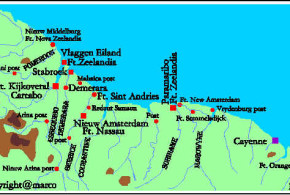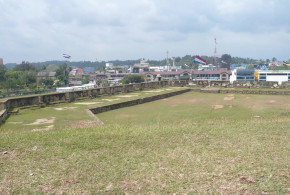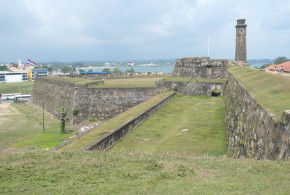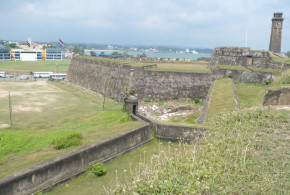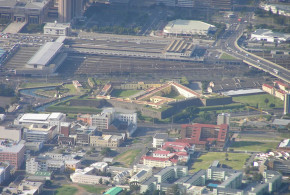Written by Marco Ramerini. English text revision by Dietrich Köster.
DUTCH EMPIRE: GENERAL STUDIES
– Various Authors, “VOC archives created in Asia and South Africa”, Internet article, TANAP web site. The VOC archives in Colombo, Chennai, Cape Town and The Hague.
– Boxer, Ch.R., “The Dutch Seaborne Empire, 1600-1800”, 363 pp., maps, Penguin Books, 1990, United Kingdom. A general work on Dutch colonial history, written by a great historian. Index: The eighty years war end the evolution of a nation, Burgher oligarchs and merchant-adventurers, sedentary workers and seafaring folk, Mare Liberum and Mare Clausum, gain and godliness at home and abroad, Pallas and Mercury, fort and factory, assimilation and apartheid, the tavern of two seas, the “Golden Century” and the “Perwig Period”.
– Devries, Harry, “The Anglo-Dutch War 1672-1674”, Ph.D. Thesis, University of Michigan, 1939.
– Gaastra, F. S., “VOC organization”, Article from TANAP web site.
– Greig, Doreen, “The reluctant colonists. Netherlanders abroad in the 17th and 18th century”, x, 306 pp., illustrations, van Gorcum, 1987, Assen, The Netherlands. Index: The Netherlands; The factories and settlements of the West India Company (Guinea, New Netherland, Brazil, Antilles, Surinam); The factories and settlements of the East India Company (Moluccas, Deshima, Batavia, Banda, Formosa, India, Ceylon, Malacca, Celebes, Cape of Good Hope).
– Hesseling, Dirk Christian, “On the origin and formation of Creoles: a miscellany of articles”, 91 pp., Karoma Publishers, 1979, Ann Arbor, USA A miscellany of articles on: Papiamento, Dutch and French Creole languages in America, Afrikaans, Ceylon.
– Israel, J., “The Dutch Republic and the Hispanic World 1606-1661”, 478 pp., Clarendon Press, 1986, Oxford.
– Israel, J., “The Dutch primacy in the world trade 1585-1740”, xxi, 462 pp., 4 figures, 12 maps, Clarendon Press, 1989, Oxford. Index: The origins of Dutch world-trade hegemony; The breakthrough to world primacy, 1590-1609; The Twelve Years’ Truce, 1609-1621; The Dutch and the crisis of the world economy, 1621-1647; The zenith, 1647-1672; Beyond the zenith, 1672-1700; The Dutch world entrepôt and the conflict of the Spanish succession, 1700-1713; Decline relative and absolute, 1713-1740; Afterglow and final collapse; Conclusion.
– Lancker, A. F., “Atlas van historische forten overzee. Onder Nederlandse vlag”, 47 pp., 1987.
– Lannoy, C. de & H. van der Linden “Histoire de l’expansion coloniale des peuples européens. Néerlande et Danemark (XVIIe et XVIIIe siècles)”, VI, 487pp., with folding maps 1911, Bruxelles
– van Bracht, J. Th. W. “Atlas van kaarten en aanzichten van de VOC en WIC, genoemd Vingboonsatlas in het Algemeen Rijksarchief te ‘s-Gravenhage”, 1982, Haarlem, The Netherlands.
– van Goor, J., “De Nederlandse Koloniën. Geschiedenis van de Nederlandse expansie 1600-1975”, 400 pp., illustrations & maps. ‘s-Gravenhage, The Netherlands.
– van Mil, Patrick and Mieke Scharloo, “De VOC in de kaart gekeken: cartografie en navigatie van de Verenigde Oostindische Compagnie, 1602-1799” 1988, ‘s-Gravenhage, The Netherlands.
– van Oers, R., “Dutch town planning overseas during VOC and WIC rule (1600-1800)”, 215 pp., 138 illustrations in black-and-white , Walburg Pers, 2000, Zutphen, The Netherlands.
– Zandvliet, C. J., “VOC maps and drawings”, Article from TANAP web site. – Zandvliet, K., “Mapping for money. Maps, plans and topographic paintings and their role in Dutch overseas expansion during the 16th and 17th century”, 328 pp., illustrations, in colour and in black-and-white, Batavian Lion International, 1998, Amsterdam, The Netherlands.
BIBLIOGRAPHIES:
– Landewehr, J., “VOC. A bibliography of publications relating to the Dutch East India Company: 1602-1800”, 840 pp., richly illustrated, with 1674 entries, fully described and fully indexed, Hes, 1991, Utrecht, The Netherlands.
– Polman, C., “The Central Moluccas: An Annotated Bibliography”, Bibliographical Series, No 12, Foris Publications, 1983, USA.
– Polman, C., “The North Moluccas: An Annotated Bibliography”, 192 pp., Martinus Nijhoff, 1981, The Hague, The Netherlands.
FURNITURE:
– Brohier, Richard Leslie, “Furniture of the Dutch period in Ceylon”, xv, 38pp., with 34 monochrome illustrations plus 27pp. of monochrome illustrations with descriptive text on facing page, National Museums, 1969, Ceylon, Reprint: State Printing Corporation, 1978, Colombo, Sri Lanka.
– Georgette Nije and Statius van Eps, “Furniture from Curaçao, Aruba, and Bonaire: three centuries of Dutch-Caribbean craftsmanship”.
– Terwen de Loos, “Het Nederlands-koloniale meubel : studie over meubels in de voormalige Nederlandse kolonies Indonesië en Sri Lanka”
– Veenendaal, J., “Furniture from Indonesia, Sri Lanka and India during the Dutch period”, 186 pp., with ca. 190 illustrations (8 in colours), 1985, Delft, The Netherlands.
NUMISMATIC:
– Bopearachchi, Osmund and Weerakhody, D.P.M., “Origin, Evolution and Circulation of Foreign Coins in the Indian Ocean: Proceedings of the Numismatic Workshop ‘Origin and Evolution of Coins” and the International Seminar “Circulation of Foreign Coins in Sri Lanka and Ancient Sea Routes in the Indian Ocean”, Colombo, 8-10 September 1994, xv, 272 pp., plates, 1998, Colombo, Sri Lanka. Index: Editor’s note by Osmund Bopearachchi and D.P.M. Weerakkody. Message from Honourable Lakshman Jayakody, Minister of Cultural and Religious Affairs. Presidential Address by Osmund Bopearachchi. I. Origin and evolution of coins: 1. The origin and development of Greek coinage, by A. Burnett. 2. Coinage in the Greek world, by C. Grandjean. 3. The origins and development of Chinese coins, by F. Thierry. 4. Islamic coins – origins and development, by V. Porter. 5. Showpieces: coins for presentation and display in early modern Europe, by B.J. Cook. 6. Rags to riches, or, how paper money became respectable, by V.H. Hewitt. 7. Women as symbols of wealth: female images on paper money, by V.H. Hewitt. 8. Treasure and treasure trove: coins and antiquities law in Britain, by B.J. Cook. II. Circulation of foreign coins in Sri Lanka and ancient sea routes in the Indian ocean: 1. Archaeological evidence on changing patterns of international trade relations of ancient Sri Lanka, by O. Bopearachchi. 2. Roman coins from India and Sri Lanka, by A. Burnett. 3. Chinese coins from the Yaphuwa site in the collection at the Anuradhapura Museum, by F. Thierry. 4. Maritime silk routes and Chinese coins hoards, by F. Thierry. 5. Islamic coins found in Sri Lanka, by V. Porter. 6. The early European coins for Sri Lanka, by B.J. Cook. 7. Currency for a colony: paper money for Ceylon printed in England, by V. H. Hewitt.
– Bucknill, John, “Coins of the Dutch East Indies: An Introduction to the Study of the Series”, 291 pp., 226 illustrations, Asian Educational Services, 2000 (1931, London, United Kingdom), Delhi, India.
– Needleman, Saul B., “Coins of European concessionary trading enclaves in India”, in: “Chatter, Chicago Coin Club”, vol. 46, February 2000.
– Scholten, C., “The Coins of the Dutch Overseas Territories 1601-1948”, 176 pp., 20 plates, dust jacket, Jacques Schulman, 1953, Amsterdam, The Netherlands.
– Shaw, William and Mohd Kassim Haji Ali, “Malacca coins”, 21 pp., Muzium Negara, 1970, Kuala Lumpur, Malaysia. Covering Malacca Sultanate, Portuguese and Dutch Colonial coins.
REVIEWS:
– “De Halve Maen” (Quarterly Magazine of the Dutch Colonial Period in America), The Holland Society of New York. A magazine of the Dutch colonial period in America. It contains articles on New Netherland in each of its quarterly issues.
– “ITINERARIO” , European Journal of Overseas History, Leiden University, The Netherlands. The journal of the Institute for the History of European Expansion of Leiden University. I have the numbers: 1995/4; 1996/1; 1996/2; 1996/3; 1996/4; 1997/1; 1997/2; 1997/3; 1997/4; 1998/1; 1998/2; 1998/3; 1998/4; 1999/1; 1999/2; 1999/3-4; 2000/1; 2000/2; 2000/3-4; 2001/1; 2001/2; 2001/3-4; 2002/1; 2002/2; 2002/3-4; 2003/1; 2003/2; 2003/3; 2004/1; 2004/2; 2004/3
ARCTIC Novaya Zemlya, Spitsbergen:
– Gawronsky, Jerzy & Boyarsky, Pyotr, “Northbound with Barents”, 255 pp., Uitgeverij Jan Mets, 1997, Amsterdam, The Netherlands.
– Zeeberg, J. J., “A voyage through time: the story of Barents’ wintering hut”, Internet article
 Colonial Voyage The website dedicated to the Colonial History
Colonial Voyage The website dedicated to the Colonial History
